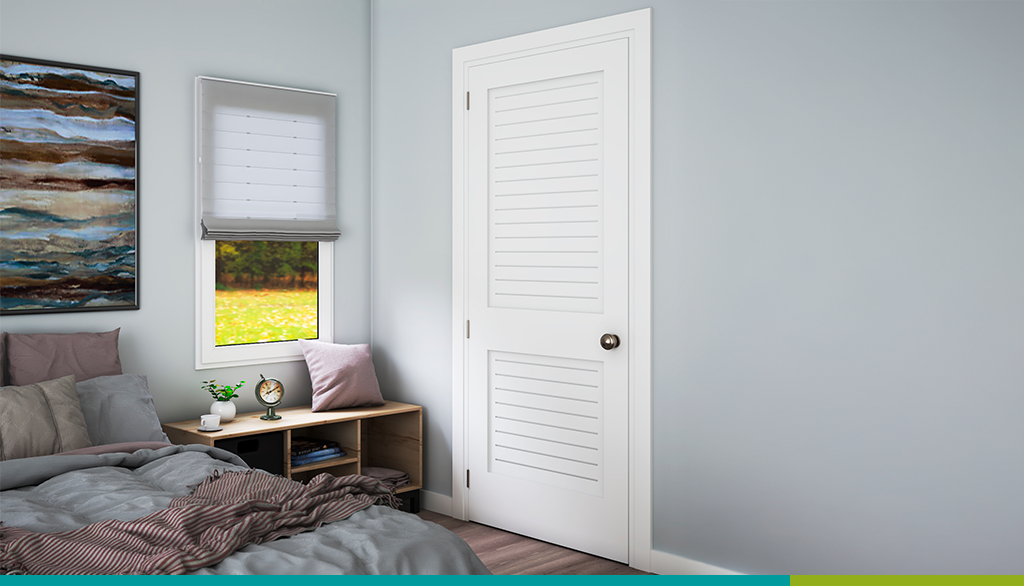The simple door.
It opens and closes, shuts us off from the world, or welcomes us into a space. Regardless, these solid, rectangular, impermeable barriers are integral to a modern way of life. They may be created from a range of materials—woods, metals, glass or stone, and available in different closings—hinged, on sliders or folding, but without them, there would be only gaping holes, a lack of warmth, little privacy and no shelter from rain, wind, sleet or snow. Doors have been used for centuries for the very same purposes they are prized for today. From the most rudimentary of beginnings to the stateliest designs to the innovation of the 21st century, the humble door’s unending usefulness is unquestionable. The purpose remains the same—and always will.
Ancient Egyptians believed that doors were literally the entrance to the afterlife; paintings depicting the time period showcase the heavy slabs in tombs—single or double and always crafted from one mass of wood. The most ancient of doors were simple hides or textiles hanging in an attempt at privacy; many others were constructed from timber (often olive, elm, cedar, oak and cypress); biblical examples include the description of King Solomon’s Jerusalem temple doors made from olive wood, carved and overlaid with gold.
 The solid doors of antiquity, such as those by the ancient Greeks and Romans were single, double, or triple doors, sliding or folding, and came to fruition at the same time as the era’s monumental architecture. Stone doors many centuries old have been found in Pompeii, Italy and in Grecian tombs (circa AD200). Heavy bronze doors were used by both civilizations—Greek tombs often featured bronze grills, while the Romans characteristically used solid bronze double doors; a large scale, famed example is the Pantheon. This design held its popularity in the Byzantine and Romanesque periods and was preserved throughout the Eastern Empire, perhaps the most significant site (circa 838) being in the cathedral, Hagia Sophia in Constantinople (Istanbul). Bronze castings were later imported to southern Italy and introduced into northern Europe, most notably to Germany. This style of door was uncommon in north western Europe until the 18th century. The premier monumental bronze doors in the United States were raised in 1863 in the Capitol at Washington, D.C.
The solid doors of antiquity, such as those by the ancient Greeks and Romans were single, double, or triple doors, sliding or folding, and came to fruition at the same time as the era’s monumental architecture. Stone doors many centuries old have been found in Pompeii, Italy and in Grecian tombs (circa AD200). Heavy bronze doors were used by both civilizations—Greek tombs often featured bronze grills, while the Romans characteristically used solid bronze double doors; a large scale, famed example is the Pantheon. This design held its popularity in the Byzantine and Romanesque periods and was preserved throughout the Eastern Empire, perhaps the most significant site (circa 838) being in the cathedral, Hagia Sophia in Constantinople (Istanbul). Bronze castings were later imported to southern Italy and introduced into northern Europe, most notably to Germany. This style of door was uncommon in north western Europe until the 18th century. The premier monumental bronze doors in the United States were raised in 1863 in the Capitol at Washington, D.C.
According to architectural and literary evidence from antiquity, the timber door was by far the most common, well established in Egypt (where the climate made warping of wood a non-issue) and Mesopotamia. The doors of today seem to emulate these old counterparts. Crafted from vertical and horizontal beams, the pieces were framed together for support and sometimes utilized locks and hinges. Specialized wooden doors in China were made of dual panels—solid on the bottom with lattice on top, while in Japan, the traditional shoji door is a panel framed with wood and covered in paper. The Dutch door, a more modern version of the traditional Flemish-Dutch type, is sliced almost perfectly in two, allowing the upper half to open while the lower half stays closed. In the 12th to 15th centuries, ornate panel and carved wood doors were mostly reserved for important structures.
The west’s archetypal medieval doors featured vertical slats with horizontal or diagonal support braces, studded with iron nails and kept in place with iron hinges. Interior double doors were noted first in Italy in the 15th century, with America and the rest of Europe following suit soon after. Glazed doors date back to the 17th century, while double-glazed (also know as French doors) may be found in British and American architecture in the 17th and the 18th centuries. The mirrored door, a French invention originated around the same time.
Today we have numerous advances in these highly functional pieces. There is the louver (or blind) door, which allows for ventilation, but maintains privacy, and the screen door, designed to let in air, but keep out unwanted insects and pests. Revolving doors (actually invented in Germany in 1881) allow for a continuous flow of people in and out of busy buildings. There are fibreglass, plywood and polymer doors, ones that slide (inspired by the shoji) and rolling doors. Some have side lites, while others are dense and smooth or feature shaker style panels. Canopy doors pivot at the top of the frame, fire doors prevent the spread of flames and the world’s largest doors were built for the assembly of the Apollo and Saturn rockets and open into NASA’s Vehicle Assembly Building at the Kennedy Space Center. Each is 139 meters high (much. much taller than the Statue of Liberty).
However, despite each and every advance in door making, the end objective is consistent. Although frequently used in rituals or symbolically, the door’s true purpose is to offer access to and from a particular space, to welcome, to offer a glimpse into a space and the people who dwell there—or just the opposite. It’s a functionality that is essential and one that has stood the test of time.



